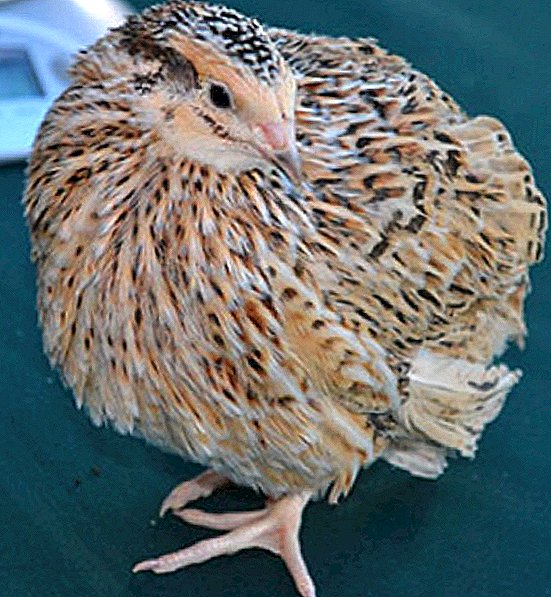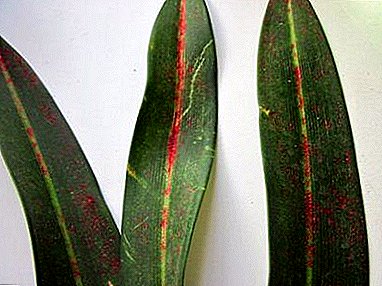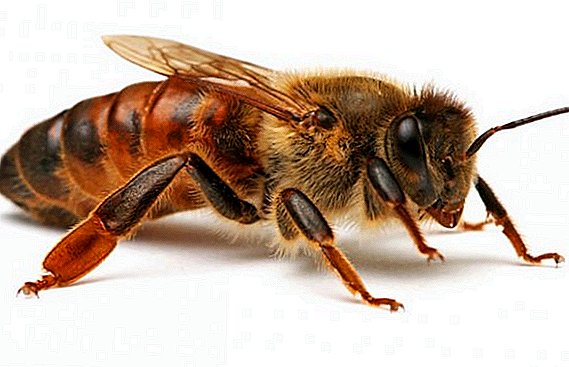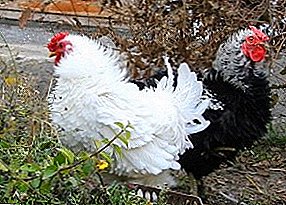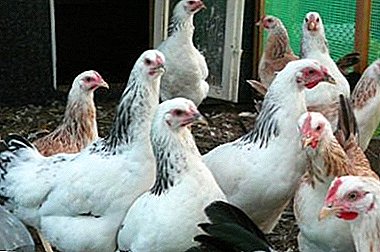
For those pipelines that have decided to acquire meat and egg hens, it is necessary to determine which of the breeds is more suitable for the stated characteristics and conditions of detention.
This article will discuss the most famous and common breeds of meat and egg chickens, as well as tips on their choice.
How is this view better than others?
 It is accepted that such a breed has a lighter and more proportional backbone, unlike those that are raised for meat, but slightly larger than those chickens that are only egg-laying. Their plumage is rather thick and evenly dense.
It is accepted that such a breed has a lighter and more proportional backbone, unlike those that are raised for meat, but slightly larger than those chickens that are only egg-laying. Their plumage is rather thick and evenly dense.
This allows the bird to adapt well in sub-zero temperature regimes. Without additional lighting, in winter, egg production may decline, however, this phenomenon is characteristic of almost all birds. An obligatory requirement for keeping such chickens is a clean and dry poultry house., or a cell, without the slightest suspicion of drafts. This type of bird is considered more active and inquisitive, more prone to "communicating" with people.
By what criteria is determined?
The best breed of chickens is determined by such indicators as:
- Maximum and minimum weight gain.
- Annual egg production.
- Egg weight
- At what age does the carrying and fertilization of eggs begin.
Top 10 most profitable representatives
Consider the best representatives of this direction.
Foxy chick

This breed was bred in Hungary. Birds are distinguished by their bright color.. Their feathers can be from light red to red. Chickens have a wide body and powerful legs.
- The adult weight of the rooster can reach 7 kg, and the chickens 4 kg.
- Egg production can reach up to 300 eggs per year.
- Begin to be born at 4 months.
- The egg weighs about 70 grams, so it is quite large, double-yolk.
A review of Foxy Chick can be viewed in this video:
Plymouth Rock

The plumage of this breed can be from all shades of black to white. There are also such colors as gray, speckled, striped, silver, partridge, yellow and hawk. Usually hens are darker than cocks..
- The weight of the rooster reaches 4 kg, and the chickens do not exceed 3 kg.
- Egg production reaches 180 pieces per year.
- Eggs are medium, not more than 60 grams.
- The period of the beginning of carrying eggs falls on the age of 6 months.
Plymouthrock overview can be viewed in this video:
Roy aland

The breed has a dark brown feathers. The bird is calm, unpretentious, happy friendly to people and neighbors.
- The weight of the rooster varies from 2.8 kg to 3.6 kg, and the chickens are no more than 2.5 kg.
- Egg production is 160 - 170 pieces per year.
- Egg weight about 60 grams.
- Begin to sweep in 5 - 6 months.
An overview of Roy-Aland can be viewed in this video:
Kuchinsky Anniversary

This species is widely distributed in Russia, since they are one of the few birds that are not whimsical to conditions. Birds are variegated. Chickens are usually brighter than chickens.
- The weight of the rooster can reach 4 kg, and the hens 3 kg ...
- Egg production up to 240 pieces per year.
- Egg average, no more than 60 grams.
- The period of onset of bearing accounts for 5.5 months.
Review of Kuchinsky Anniversary can be viewed in this video:
Fireball

The bird of this breed has many colors, but the most common is salmon. The bird itself is white in color, and salmon on the back, wings and tail. Legs also cover light feathers. Firelions are very curious, so they quickly adapt to poultry houses when they are placed in a common herd. There is a dwarf version of the faeries..
- The weight of the rooster up to 3.5 kg, chickens from 2.1 kg to the weight of the rooster.
- Egg production is 150-200 units per year.
- Egg size 45 - 60 grams.
Review Firewall can be viewed in this video:
Zagorskaya Salmon

Chickens have a light brown plumage, and cockerels are black and white. The breed adopted a vociferous singing from its direct ancestors Yurlovsky vociferous. Therefore, when choosing a place for the house, consider this fact. Laying hens are bad chicks.
- Chickens and roosters reach about the same weight from 2 kg to 3.5 kg ...
- Their egg production is high at 200 to 250 pieces per year.
- Egg weight more than 60 grams.
- The beginning of laying eggs accounts for 6 - 8 months.
Review of Zagorskaya Salmon can be viewed in this video:
New hampshire

Cockerels and chickens are fawn-red color. The head of the cockerels with a golden hue, and the body is brown-red. There are black feathers in the tail. Chickens are painted the same color as cockerels, only slightly paler.
- An adult rooster can weigh no more than 3.7 kg, and a chicken no more than 3 kg.
- Egg production reaches 200 pieces per year.
- The average egg size is from 58 to 60 grams.
- The onset of egg laying is at the age of 6 months.
Poltava clay

The breed has a light brown or dark brown color. With some nuances of selection, you can display a cuckoo color or with a predominance of black.
- Chicken weight from 2 kg to 2.5 kg, and the weight of males, respectively, 1 kg more.
- The main feature of the taste of meat is the small presence of fiber and a pleasant taste.
- Egg weight about 56 grams.
- Egg production from 180 to 200 pieces per year.
Sussex

Conflict-free breed of chickens. Chickens tend to show maternal qualities to chickens, and males can by nature get along with several of their subspecies in one herd.
- The weight of the rooster and hens can reach up to 3.5 kg.
- Egg production 200 - 250 pieces per year.
- Egg weight 60 grams.
A review of Sussex can be viewed in this video:
Moscow birds
Black

This breed has a well-developed musculature, their color is black, with obvious visible patches from copper to golden hue. Usually, Roosters may have a bright golden hue on their shoulders, mane, and lower back..
- The mass of live weight of a bird for chickens is 2.5 kg, for cockerels it is 1 kg, respectively, greater.
- Egg production from 220 eggs per year to 280.
- One egg weighs an average of 60 grams.
Review of Moscow black chickens can be viewed in this video:
White

The Moscow white breed was bred specifically for conditions with a prevailing cold climate. Quite dense plumage does not freeze in winter, and the white color does not allow the bird to overheat in summer.
- The weight of chickens is not more than 2.7 kg, and the males is not more than 3.7 kg.
- Start laying eggs at 5.5 - 6 months.
- Egg weight 62 grams.
- Egg production up to 230 eggs per year.
Layers lay the maximum number of eggs per year only in the first 1 - 2 years of life.. Then the reproductive function gradually decreases. This is due to both the aging of the bird, and the peculiarities of the content of certain species.
It also happens that chickens can carry the maximum number of pieces per year throughout their lives, but this happens very rarely and can only happen to individual breeds of chickens.
Tips for choosing
- First of all, think about what you would like to get from the bird? A large number of eggs or high meat productivity? Or do you want both, but in the average? For a large number of eggs per year, choose the breed, where the egg production at the level of 200-250 pieces per year. If you need meat breed, then in the standard of such breed weight should be at least 4-5 kg for males.
- Read the content carefully. Some types may be floor-standing, others only cellular. Therefore, before you start a bird of a particular breed, learn how to properly contain the breed.
- It is necessary to carefully consider how to feed a particular breed. Basically, the daily ration is standard for meat and egg birds, but there are those whose diet may differ slightly.
- Read or talk with the breeders, what kind of character this or that breed. It happens that aggressive breeds cannot get along in the same room with other birds. Therefore, for these you will have to allocate a separate place, as they will often fight for territory with other roosters, and chickens to chase and peck.
- If you want to start a large number of livestock at once, then calculate whether there is enough space in your chicken coop for the desired quantity. Otherwise, due to the lack of free space for both walking and overnight, the breeds will fight among themselves over the territory.
Conclusion
Meat-egg breeds of chickens are very common in agriculture and private farms, than on an industrial scale. This is due to the fact that in industry it is more convenient for factory owners to breed only laying hens or only broilers, which is extremely inconvenient for private owners. therefore breeds of chickens of this orientation are very beneficial for personal subsidiary farms.


